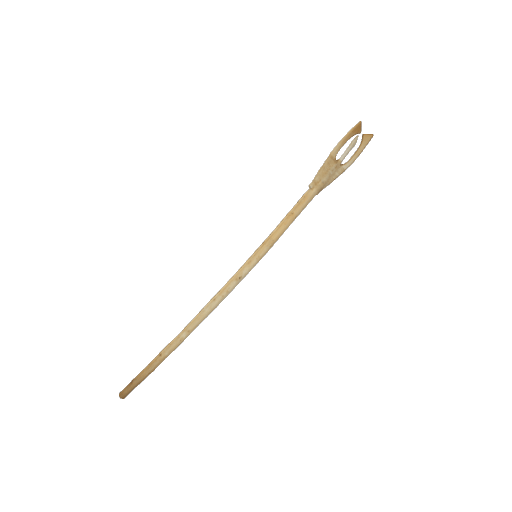Nigog
A nigog (a word of Mi’gmaq origin) is a tool used to catch fish. It is also known as an pronged harpoon, a trident, or a fishing spear. The nigog consists of a long shaft ending in a sharp central prong, between two outer jaws. Once the fish is speared by the central prong, it remains captive in the two lateral jaws.
The nigog is mainly used for shallow-water fishing, and for catching large or flat fish. It is frequently used for night fishing lit by torchlight, which attracts the fish, making them easier to harpoon.
Fish is an important food resource, and its predictable migrations through waterways facilitate its capture. Salmon, for example, is caught in the spring as it swims up rivers to spawn. Netting is a common technique on spawning grounds. Lake Touladi and surrounding lakes are populated by whitefish, speckled trout and lake trout, among others.
References
Date: 20th century
Origin: Unknown
Owner: Site Traditionnel Huron Onhoüa Chetek8e. Wendake.
Sources:
Pointe-à-Callière, cité d’archéologie et d’histoire de Montréal. (n.d.). Foëne ou trident [Foëne or trident]. ARCHÉOLAB.QUÉBEC. Retrieved September 22, 2022, from https://www.archeolab.quebec/recherche/objet/209014
Digital Museums Canada. (n.d.). Eel fishing in the Côte-du-Sud region. Musée de la mémoire vivante. Retrieved September 22, 2022, from https://www.communitystories.ca/v2/la-peche-a-l-anguille_eel-fishing/story/aboriginal-and-european-techniques/
